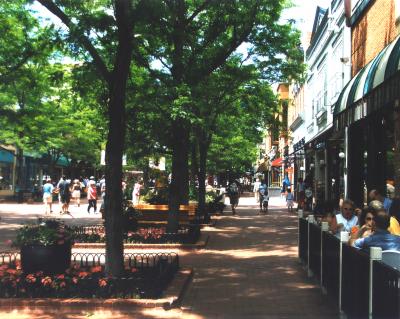
Traditional Mixed-Use Neighborhoods Protect Home Buyers from Rising Gas Prices
Choice of neighborhood can reduce household driving miles by 10,000 or more, saving hundreds of dollars per month
Submitted on 06/18/2008. Tags for this image:
Warning: Table './archive_cnu/watchdog' is marked as crashed and should be repaired query: INSERT INTO watchdog (uid, type, message, variables, severity, link, location, referer, hostname, timestamp) VALUES (0, 'php', '%message in %file on line %line.', 'a:4:{s:6:\"%error\";s:7:\"warning\";s:8:\"%message\";s:39:\"Invalid argument supplied for foreach()\";s:5:\"%file\";s:100:\"/var/www/archive.cnu.org/htdocs/sites/cnu.civicactions.net/themes/cnu/node-content_news_item.tpl.php\";s:5:\"%line\";i:27;}', 3, '', 'http://archive.cnu.org/cnu-news/2008/06/traditional-mixed-use-neighborhoods-protect-home-buyers-rising-gas-prices', '', '18.188.113.189', 1732316553) in /var/www/archive.cnu.org/htdocs/includes/database.mysql.inc on line 135
What would you do with an extra $300 to $400 a month? Pay down your credit cards? Enjoy an evening out? Finally build that college fund for your children? Investment advisers say that if you conservatively invest $3,600 per year, you could grow that amount to $117,000 over the course of 18 years.
After mortgages or rent, owning and driving vehicles is the second highest household expense, and people who live in a walkable neighborhood near shops and schools save thousands of dollars a year, a fact that makes the “drive ‘til you qualify” mindset as outdated as buying a gas-guzzling SUV.
“In home buying, the buzzwords are still “location, location, location,” but what people increasingly want to know about those locations is how efficient they are,” says John Norquist, president of the Congress for the New Urbanism, who advises that before you shop for a house in a far-out subdivision, consider a house in a conveniently located walkable neighborhood. “If you live near the heart of things, you’re able to afford the American dream without going broke on transportation costs.”
Norquist said easy-to-use new tools now help house hunters get a handle on how much driving they’ll do in their new neighborhood – and the differences between neighborhoods can be eye-popping. Research from the Center for Neighborhood Technology (CNT) and the Brookings Urban Markets Initiative shows that the choice of a neighborhood can mean a difference of 11,000 miles per year or more per household. If your car averages 20 miles per gallon (and gas is $4), that’s a $2,200 annual savings off the bat. Factor in the need for fewer vehicles per household, the reduced wear-and-tear on cars, and the ability to substitute cheaper transit trips for car-trips and the savings grow from there.
Consider this comparison from Atlanta: In exurban Dacula with its fast-growing golf-course communities, the average household drives 22,993 miles in a year. But with a home near the MARTA light-rail station in walkable inner-ring Decatur, a purchaser buys into a neighborhood where households average 12,250 miles, according to the Housing and Transportation Index created by the Center for Neighborhood Technology, which is found at htaindex.cnut.org. The variation in driving distances between Decatur and Dacula means a difference of more than $275 per month in transportation costs, according to CNT.
The HTA Index makes such comparisons possible for 52 metropolitan areas across the country. In the Twin Cities, it shows the wisdom of shopping for home in the leafy urban neighborhood of East Isles next to Lake Calhoun where the average household drives 9,420 miles per year. That compares to 21,684 miles per year in exurban Rosemount. Transportation expenses run to $1,036 per month in Rosemount compared to $620 per month in East Isles – a savings of $415.
Traditionally, lenders have judged housing affordability as 30 percent or less of a household’s income. What has been left out is the transportation costs, which in some places are another 30 percent of a household’s income. The old “drive til you qualify” mentality that has led to longer and longer commutes for Americans costs money and reduces our quality of life, and contributes to the carbon emissions at the heart of global warming.
 While established traditional neighborhoods allow people to live full lives with far less driving, new urbanist development achieves similar results on infill parcels in these established neighborhoods -- or in well-located new neighborhoods on parcels large enough to create a new grid of streets and a rich mix of uses at densities that support transit. Examples include the redevelopment of the former Stapleton airport in Denver or Atlantic Station, a former steel plant near the heart of Atlanta. Before construction, average working residents of Atlantic Station were expected to drive 25 miles per day, 9 miles less than the 32 miles per day driven by the average working resident of metro Atlanta. Today, the average working resident of Atlantic Station drives just 8 miles per day, according to the U.S. EPA.
While established traditional neighborhoods allow people to live full lives with far less driving, new urbanist development achieves similar results on infill parcels in these established neighborhoods -- or in well-located new neighborhoods on parcels large enough to create a new grid of streets and a rich mix of uses at densities that support transit. Examples include the redevelopment of the former Stapleton airport in Denver or Atlantic Station, a former steel plant near the heart of Atlanta. Before construction, average working residents of Atlantic Station were expected to drive 25 miles per day, 9 miles less than the 32 miles per day driven by the average working resident of metro Atlanta. Today, the average working resident of Atlantic Station drives just 8 miles per day, according to the U.S. EPA.
“People often get the advice that your home is your greatest investment,” said Norquist. “This market is showing that not every home is a great investment. With gas prices rising, sprawl is becoming a real risk factor in real estate. Walkable mixed-use new urbanist neighborhoods offer relief.”
To see more comparisons and find more information on location efficiency, including links to annual driving mile calculators, visit cnu.org/locationefficiency.

